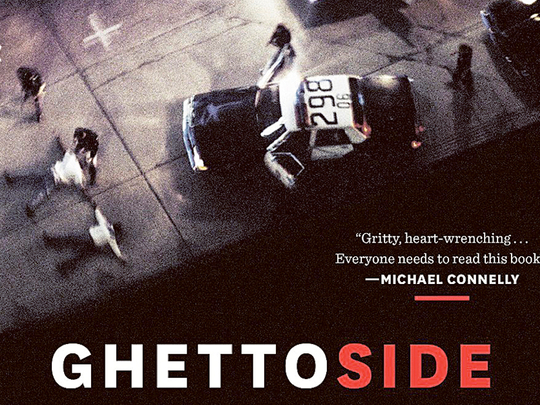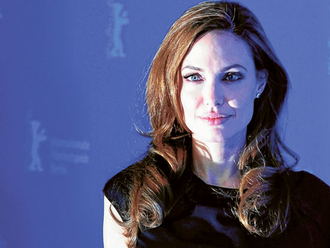
Ghettoside: A True Story of Murder in America
By Jill Leovy, Spiegel & Grau, 384 pages, $28
If there is one subject that American liberals would rather skirt, it is black-on-black crime. Anything that could fuel a racist narrative — African-American murder rates are a bigot’s staple — is understandably avoided.
“Ghettoside” is thus a brave book. Its author, Jill Leovy, is a reporter for the Los Angeles Times who “embedded” herself within the Los Angeles police section responsible for the notorious Watts ghetto — much as journalists attached themselves to US army units in the Iraq war. The result is an eye-opening debut. It is not often that I pick up a work of nonfiction and picture the film unfolding before my eyes.
“Ghettoside” also offers a calm dissection of America’s oldest epidemic — the culture of homicide that continues to afflict large chunks of the urban US. It is arguably the biggest stain on America’s character. Most of all, however, it is something most of us prefer to ignore.
Leovy’s story follows the investigation into the murder of Bryant Tennelle, an African-American 18-year-old who was gunned down at an intersection in south Los Angeles in 2008. This is where the race riots of the late 1960s took place. It is also where in 1991 five police officers were caught on video beating Rodney King, an unarmed black man, following a high-speed car chase. Four of them were prosecuted for using excessive force; their acquittal sparked another round of riots that claimed 53 lives the next year. Most of this took place in Watts.
Since then Los Angeles’s murder rate, and that of the US in general, has fallen sharply. Many attribute the decline to the zero tolerance methods pioneered by William Bratton, who was New York’s police chief in the 1990s. After a stint as head of the Los Angeles Police Department in the 2000s, Bratton is back in his old job.
Following the choking to death last year of Eric Garner, a 43-year-old black man, who was cornered by New York Police Department officers having been caught illegally selling cigarettes, Bratton’s “broken windows” approach no longer gets such uncritical reviews. Shortly after Garner’s suffocation came the police shooting of Michael Brown in Ferguson, Missouri, which triggered weeks of protests and clashes.
Zero tolerance is one theory. Another attributes America’s reduced murder rate to draconian sentencing laws — the US puts more people in jail than the rest of the developed world combined. Still others credit the ageing of US society. Yet, regardless of what caused the decline, America continues to have a far higher rate of killing than elsewhere, and the victims and culprits remain disproportionately black.
Forty per cent of people murdered in the US are African-American males, though they comprise only six per cent of the population.
In Los Angeles, like most cities, a distressingly high share of black-on-black killings remain unsolved, very often because of police apathy. Tennelle’s murder was an exception. His father, Wally Tennelle, was (and still is) a detective in the Los Angeles Police Department. Tennelle’s colleagues went out of their way to find his son’s killers. As the defence attorney said after they were sentenced, “If all these cases were investigated like Tennelle, there’d be no unsolved cases.”
Leovy’s hero is John Skaggs, the detective who cracked Tennelle’s murder. A veteran of the ghetto, Skaggs was recruited to lead the case because of his high success rate — most years he would solve more than 90 per cent of his workload. He refers scathingly to the “forty percenter” detectives, who give up at the first hint of the trail going cold.
A life-long Republican of Scots-Irish extraction, Skaggs’s profile might at first seem not to match his zeal. Yet beneath his regular-guy exterior simmers the belief that nothing “ghettoside” will change unless the culprits are brought to book, and quickly.
“It is not the harshness of punishment but its swiftness and certainty that deters crime,” explains Leovy.
In the ghetto police stations, they joke about NHI homicides — “no human involved”, meaning black on black. To Skaggs, America’s lack of interest is a national disgrace, and he has turned down promotion to higher ranks in cushier neighbourhoods because he believes the ghetto is where he is needed.
Unlike most of his colleagues, who merely work in Los Angeles, Skaggs also lives within its county lines. How else could he understand the city in which he toils?
Solving crimes is about getting people to talk. In the ghetto that is notoriously hard, particularly for a white cop. “Cops and prosecutors felt like door-to-door salesmen, trying to peddle a legal system no one wanted anything to do with,” writes Leovy. But Skaggs is a persuasive salesman.
The pace in Leovy’s book is set by the chase. With enormous patience, Skaggs unearths a key witness, keeps her off the streets, and brings the case to a successful trial. Yet even though it is a priority, Skaggs has to beg for resources to protect his witness and stake out his suspects. The investigation coincides with the 2008 recession, which leads to an overtime ban (union rules forbid even detectives from doing unpaid work).
The trial itself is bathetic, since we already know its outcome and the killers’ motive is depressingly banal.
At one or two points, Leovy unspools more detail than we want and the pace of the book suffers — a trait common to embedded reporters. Yet for the most part her knowledge makes for lapidary prose that crackles with insight. It is also deeply humane. You can spot a victim’s relative with their tell-tale “homicide eyes”. Skaggs picks up on people who are lying with the “altered perspective of the craftsman”. At the trial, the sadness on Tennelle’s mother’s face is “so deep it seemed ancient”.
Leovy’s book opens with a quote from Camus, which keeps its relevance throughout. “When you see the suffering and pain that it brings, you’d have to be blind, mad, or a coward to resign yourself to the plague.”
–Financial Times









